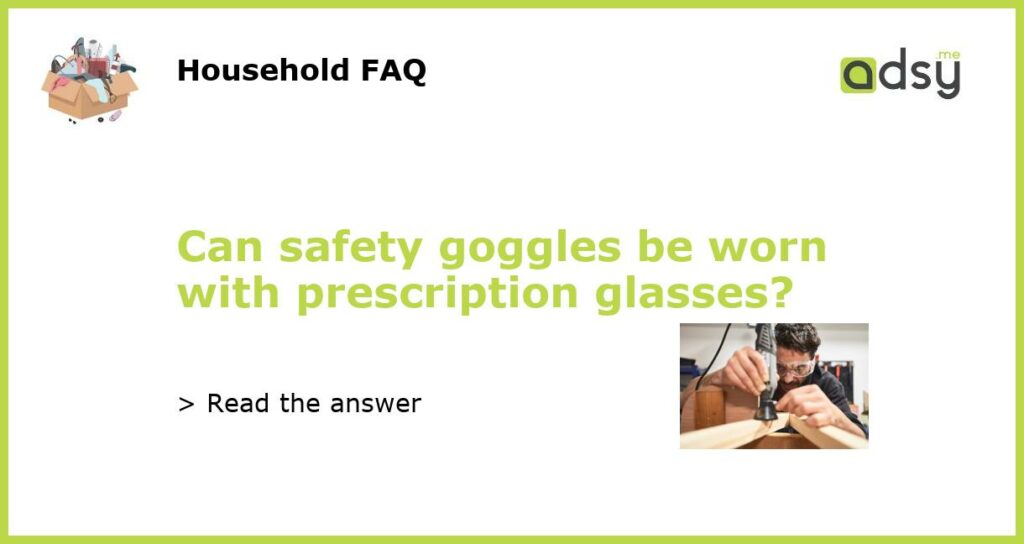Yes, safety goggles can be worn with prescription glasses
Prescription glasses are a necessity for many people who need vision correction. However, when it comes to certain jobs or activities that involve potential risks to the eyes, additional eye protection may be required. This is where safety goggles come into play. Fortunately, there are options available that allow individuals to wear their prescription glasses along with safety goggles. In this article, we will explore the different types of safety goggles that can be worn with prescription glasses, as well as their benefits and limitations.
Safety goggles that fit over prescription glasses
One of the most common options for wearing safety goggles with prescription glasses is to use safety goggles that are designed to fit over regular eyeglasses. These goggles typically have larger frames and offer enough space to comfortably fit and protect the prescription glasses worn underneath. They often come with adjustable straps for a secure fit and can be easily worn and removed as needed. These goggles are a convenient choice as they provide protection for both the eyes and the prescription glasses, reducing the risk of damage to both.
Safety goggles with prescription inserts
Another option for individuals who need to wear prescription glasses while using safety goggles is to choose goggles that come with prescription inserts. These goggles have a separate lens or insert that can be customized with the individual’s prescription and fitted inside the goggles. The advantage of this option is that the prescription lens can be easily replaced or updated as needed, without having to replace the entire set of safety goggles. It also allows for a more customized fit, as the prescription lens can be tailored to the individual’s specific needs.
Prescription safety goggles
For those who require both prescription glasses and safety goggles on a regular basis, prescription safety goggles are available as a specialized solution. These goggles are specifically designed to meet safety standards while also incorporating prescription lenses. They are often made to order, taking into account the individual’s specific prescription requirements. Prescription safety goggles provide the convenience of having both vision correction and eye protection in one piece of eyewear, eliminating the need for separate glasses and goggles. However, it’s important to keep in mind that these goggles may be more expensive than other options and may require a longer processing time.
Benefits and limitations
The ability to wear safety goggles with prescription glasses provides individuals with the necessary eye protection without compromising their vision correction needs. By choosing the right option for their specific requirements, individuals can ensure that their eyes are adequately protected in potentially hazardous situations. However, it’s important to note that there may be some limitations to wearing safety goggles with prescription glasses. The fit and comfort can vary depending on the specific combination of goggles and glasses, and some individuals may find it uncomfortable to wear both at the same time. Additionally, some safety goggles designed to fit over prescription glasses may not offer as much coverage or protection as goggles without prescription inserts. It’s important to choose safety goggles that meet the necessary safety standards and provide adequate protection for the specific task or activity being performed.
Conclusion
Overall, safety goggles can be worn with prescription glasses, offering individuals the necessary eye protection in a variety of situations. Whether it’s using safety goggles that fit over prescription glasses, goggles with prescription inserts, or prescription safety goggles, there are options available to accommodate different needs and preferences. By considering the benefits and limitations of each option, individuals can make an informed decision and ensure that both their vision correction and eye safety requirements are met.






